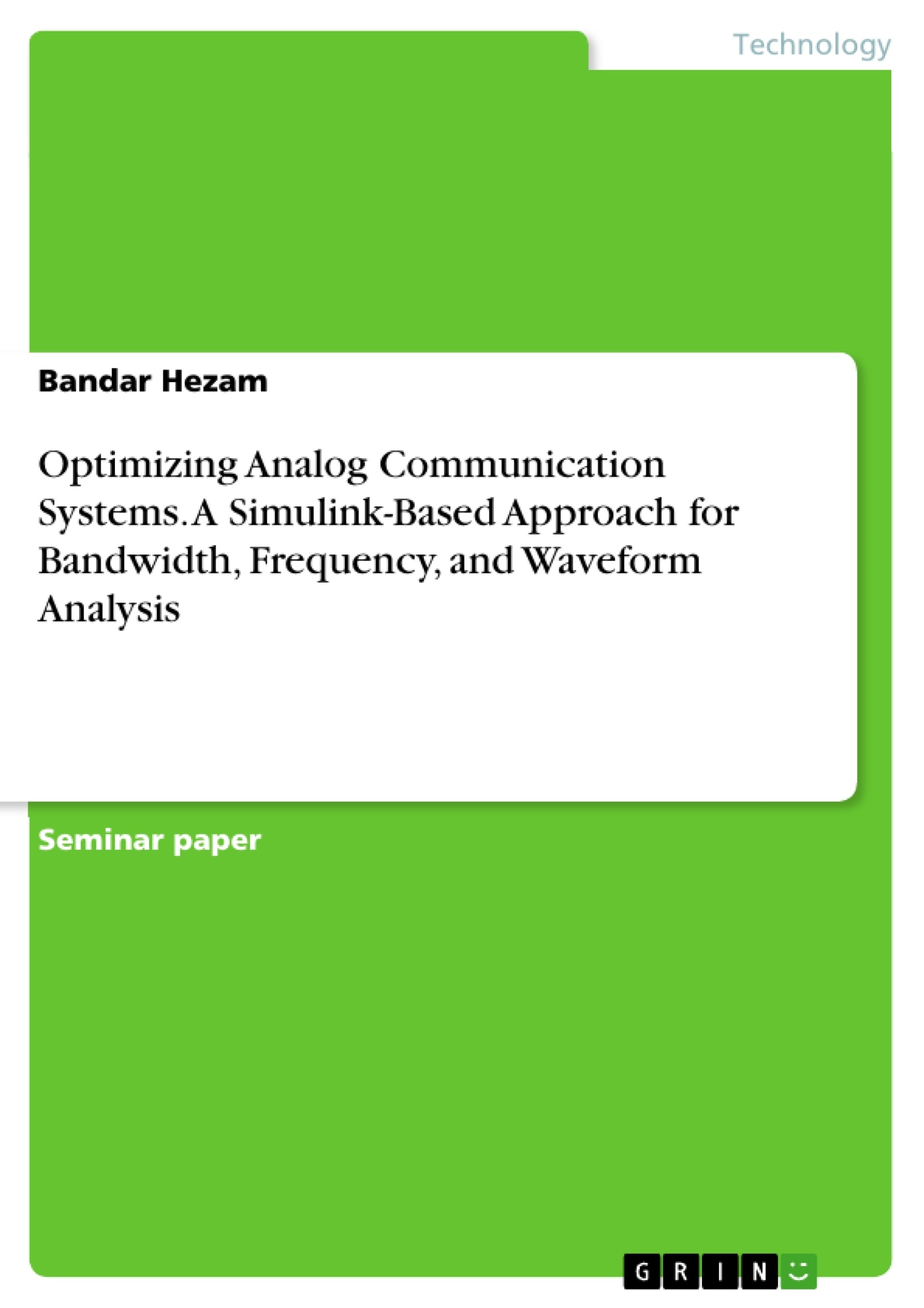Communication systems play a pivotal role in human life, serving as the conduits for information exchange across diverse realms. This paper delves into the intricacies of communication systems, categorizing them based on power efficiency, cost-effectiveness, and wide-band efficiency. Building on the seminal work of Hanzo, Webb, and Keller (2000), the study emphasizes the fundamental components of sender and receiver within communication systems, crucial for both analog and digital transmissions.
The research focuses on the practical implementation of communication systems, employing Simulink as a powerful software tool. The study employs a comprehensive block diagram to illustrate the core components of a Communication System, emphasizing the critical role of Simulink in simulating and controlling analog communication systems. Through this approach, the paper investigates key characteristics such as bandwidth, frequency, and waveform, providing insights into baseband, modulation cases, and construction scenarios. The integration of Simulink facilitates a deeper understanding of the system's behavior and performance, offering valuable implications for optimizing analog communication systems in real-world applications.
- Quote paper
- Bandar Hezam (Author), 2019, Optimizing Analog Communication Systems. A Simulink-Based Approach for Bandwidth, Frequency, and Waveform Analysis, Munich, GRIN Verlag, https://www.grin.com/document/1426542
-

-

-

-
Upload your own papers! Earn money and win an iPhone X. -

-
Upload your own papers! Earn money and win an iPhone X. -

-
Upload your own papers! Earn money and win an iPhone X. -

-
Upload your own papers! Earn money and win an iPhone X. -

-
Upload your own papers! Earn money and win an iPhone X. -

-
Upload your own papers! Earn money and win an iPhone X. -

-
Upload your own papers! Earn money and win an iPhone X.

